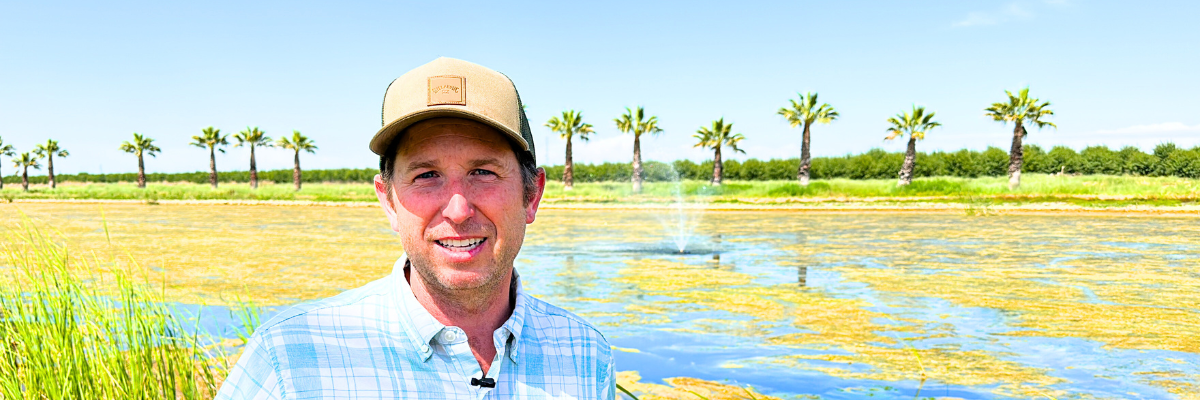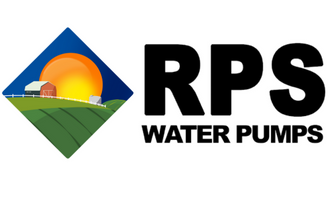

Answering Your Water Pump Questions
with RPS Engineer Mike
What Size Pressure Tank Do I Need?
Common questions we get every day often are in relation to well pressure tanks. What are they, how do they work, and most importantly, how big do I need them to be for my water system? Well pressure tank size affects your water volume, and total volume is going to be the reserve that you have before your well pump starts up again.

How Pressure Tanks Work
You may have noticed that if you already have a water pressure tank, the pressure reduces a bit when you’re running water. The well pump pressure switch that is tied between your pump and pressure tank is set at a PSI range (often 30/50 or 40/60). As pressurized water flows out of the tank, pressure reduces until it hits your bottom cutoff, and your pump is signaled to turn on.
At this time, there still might be a noticeable reduction in water pressure. If, for example, your pump is operating at 3 Gallons per Minute (GPM) but you’re running multiple faucets at 5-7 GPM, then the pump is the limiting factor, and you may need to consider sizing up.
| 25RPS05 Pump End |
|
| SEE SPECS |
When to Increase Well Pressure Tank Size
Even with a larger water pump, if you’re still noticing constant drops in PSI, or if the pump is ‘short cycling’ and turning on too frequently for its own good, you would need a larger pressure tank size to handle the demand. For more information on residential water pumps, check out our collection.
Short cycling reduces the minimum run time and puts more strain on the motor. Fewer pump cycles generally extend the life of your well pump and reduce the number of repairs needed over time.
Real-World Tank Size Examples
In my experience, I’ve seen homes use anywhere from 20-gallon to 120-gallon residential pressure tanks. I’ve also had plenty of customers tie multiple 20-gallon storage tanks together in series to increase their pressurized storage over time, so you don’t have to commit to the largest size available to increase drawdown capacity.

How to Properly Size Your Well Pressure Tank
If you haven’t bought a pressure tank yet, then a series of short questions followed by some calculations may prove helpful.
How many gallons of water do you use per day? How often do you want to prepare for a scenario where you're using multiple faucets at 1-2 GPM? Do you have landscaping running off of your residential well? For those with deeper wells, our deep well pumps might be necessary to consider alongside your pressure tank choice. Would you ever want to run landscaping and residential watering at the same time?
These are all important factors to consider, but they miss the most important factor of them all, which is price. The essential question is, how much are you willing to pay for comfort and ease of mind?
Understanding Drawdown Capacity in Your Water Pressure Tank
Keep in mind that a tank’s usable volume is about 1/3-1/2 of the total tank volume listed, depending on your pressure switch settings. The rest is compressed air used to maintain pressure between cycles.
For example, a 20-gallon tank may only provide about 6-10 gallons of drawdown before the pump needs to start again. Any residential customer can use a 20-gallon tank, but is the cheaper price worth pressure fluctuating excessively?
Even more importantly, you don’t want your pump to cycle too much and wear itself out, cutting into its lifespan. Most customers would prefer a slightly larger tank size for added peace of mind.
| Pumptrol Pressure Switch |
 |
|
| SEE SPECS |
Sample Formula to Estimate Usage
As a general rule, I would recommend going through all your family's watering needs in a given day or week, and listing out how many gallons an activity requires.
For a sample calculation, we usually figure 50-100 gallons per day (GPD) per person as an overestimate. You could divide that total figure per day over the roughly 16 hours where everyone is awake to get 25 gallons per hour for a family of four, or less than a gallon per minute usage.
That’s pretty low, but we could then say that over the course of a day, there are several water ‘spikes’ where multiple family members are showering at the same time, maybe even as the washing machine is running.
If we assume a peak usage every day of 10 gallons per minute for a standard household, that surpasses the 1/3 quantity of a standard 20-gallon pressure tank’s system efficiency.
So for a standard family, I’d get a slightly larger tank from that minimum. From there, it’s up to you to figure out what your daily needs are and how comfortable you are with small reductions in pressure here or there.

We are Here to Help
If all this water pressure tank business is feeling overwhelming, we’re happy to discuss more over the phone ((855)-374-4406) or email (help@ruralpowersystems.com).
If you’re looking for a route that doesn’t include a pressure tank, consider our variable speed booster pumps, which deliver optimal performance and stable PSI without a traditional tank.
RPS Water Pumps is a major player in the DIY community, and so we take a lot of pride in both our pre-sales and post-sales support. Reach out if you have any questions, and we’ll be here for you, without any pressure of needing to make a purchase right then and there!
Take the Next Step to Water Independence
Learn More About Water Pumps
-
 If you’re considering replacing a well pump and it’s your first time, you may have questions about long it may take. We often say a full install only has to be a couple of hours, but is that actually accurate?Read now
If you’re considering replacing a well pump and it’s your first time, you may have questions about long it may take. We often say a full install only has to be a couple of hours, but is that actually accurate?Read now -

How many GPM is a good well pump?
Water needs can differ significantly depending on circumstances, and you may need a submersible well pump with a significantly higher or lower flow rate, depending on household size, irrigation needs, and sprinkler use.Read now -

Can you put in too big of a pressure tank?
When it comes to sizing a well pressure tank, there really isn’t an upper limit as to how big of a tank you can put in. There are some pros and cons to different size pressure tanks, and they can have an impact on the lifespan of your pump.Read now






